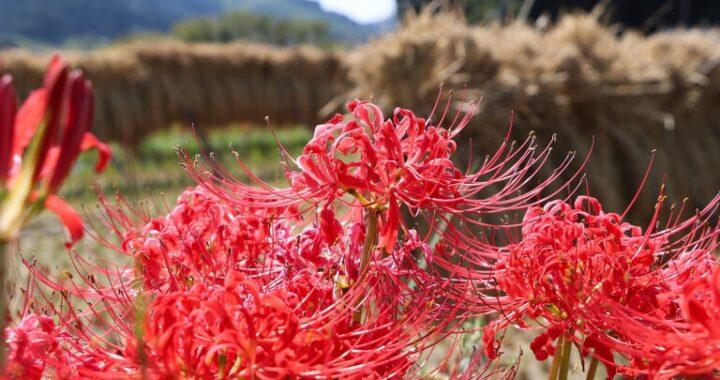みなさん こんにちわ!
My name is Sarah and, together with Pau, I have recently joined Obubu as a new Assistant Manager.
Actually, you might have seen me before, trotting around Obubu’s blog and social media [The (not so) Secret Life of An Intern – May 2023] as last spring I first joined Obubu as an intern (Intern #146).
When I came back to Obubu two weeks ago, the Obubu team had to face a dilemma: how to distinguish me from Sara, Intern #152, who is, among many (great) things, the amazing artist that created this painting [click here to see].
Who put an end to this was Nakai Sensei, our tea ceremony teacher. As she remembered me from the pictures of an ikebana class I had previously attended in Spring, she called me 花のサラ(Sarah of flowers).
While this was happening, a mantle of red petals was slowly covering Wazuka.
I had been looking for a while for a topic for my monthly blog posts, so the blooming of the red higanbana paired with my new nickname came as an epiphany: I will be writing about flowers!
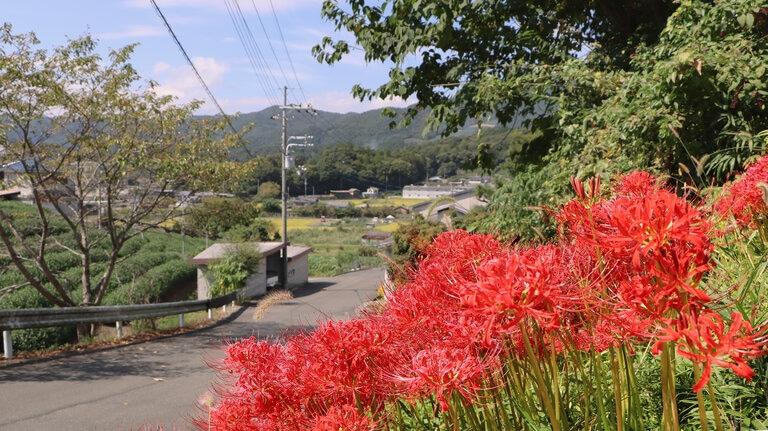
Seasonality is one core element of Japanese tea culture: for instance, one one side, farming tea is inextricably linked to the flow of season, and, on the other side, in traditional tea ceremony, the tea room, the sweet offered to guests and the flower arrangements must reflect the season outside of the tearoom.
As an Assistant Manager, I will have the chance to live in Wazuka for one year, and experience the season flowing and changing.
And what best way to document it if not through flowers?
As you might have guessed, the flower of this month is higanbana (Lycoris radiata), known in English as Red Spider Lily.
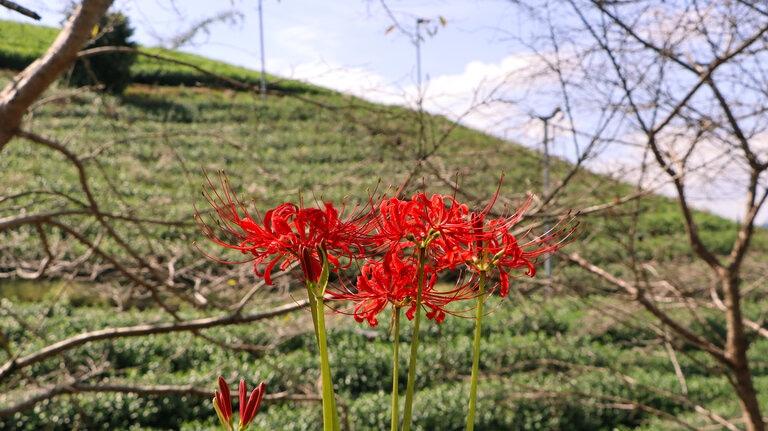
This flower represents the arrival of the fall, as it blooms around the Autumn Equinox. The name, Higanbana, comes from higan, which is a period of 7-days around the autum equinox1. In Buddhist tradition, this uses to be a period of veneration of ancestors – which is why this flower can be found in cemeteries.
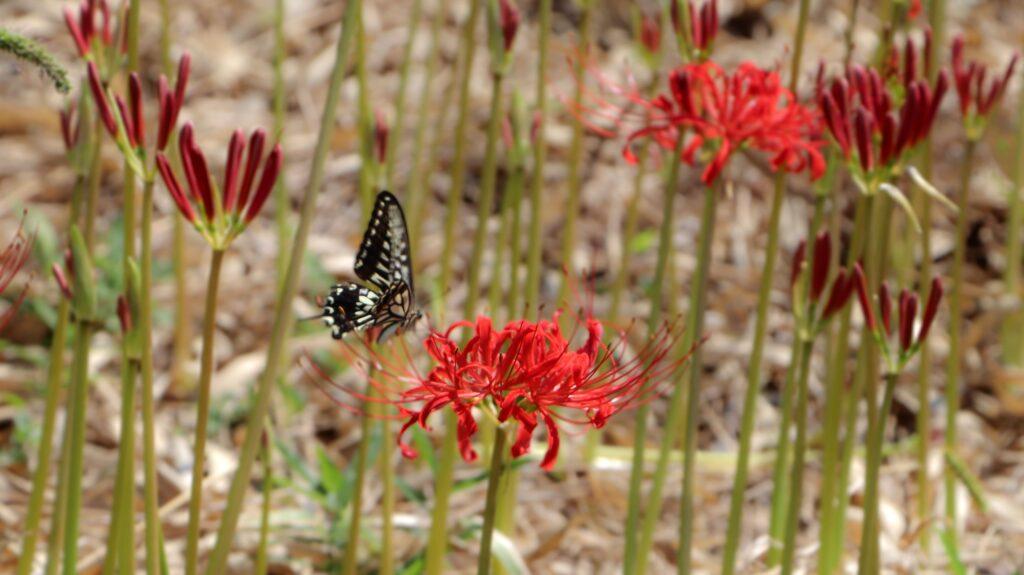
The bulb of this flower stays dormant from June to the beginning of September, then, around the equinox, a stem grows and the vermillion flower blooms2. Their bulb is poisonous for mouses and other rodents, and for this reason the presence of Higanbana is appreciated near rice fields3.
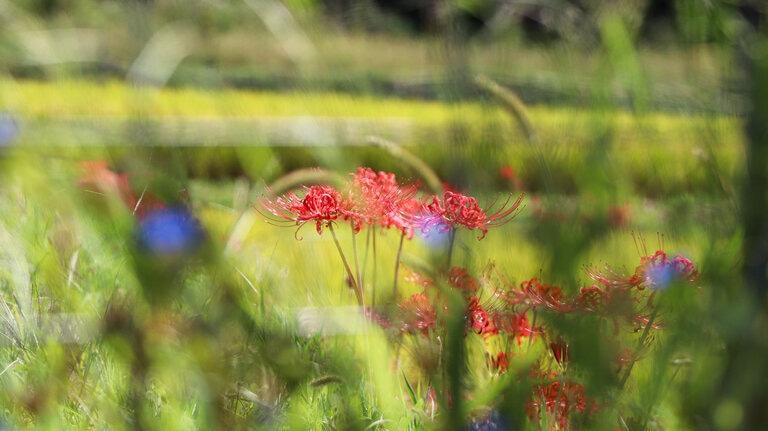
Just like tea, this plant originated in China and was then brought to Japan4.
Their blooming this year was silent and unnoticed, I barely paid attention to them, until, one day, they appeared as a red mantle when I look out the office window. I overheard one intern saying with excitement: “These red flowers are everywhere!”. That is when higanbana actually caught my attention.
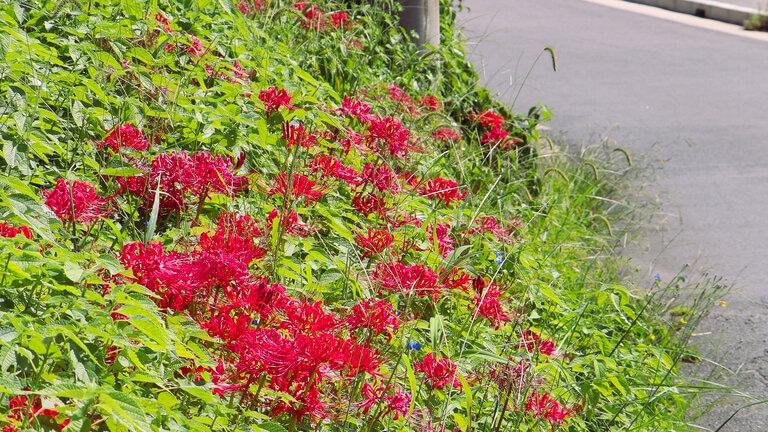
From that moment I promised myself to pay close attention to the changes in the environment around me, and I will do my best to keep documenting them.
Now, I am so excited to know what will be blooming next month!
Until next time, have a brew-tea-ful time!
Sarah
- Avdiushenkova I.V. Ancestor Worship in Contemporary Japan. Russian Japanology Review. 2023;6(1):44-68. https://doi.org/10.55105/2658-6444-2023-1-44-68 ↩︎
- Inoue, T. and Nagai, M. (2015). Impact of temperature changes on flowering tourism: A case study on the flowering of Amaryllis japonica. Journal of the Japanese Society of Biometeorology, 52(4), pp.175-184. https://doi.org/10.11227/seikisho.52.175 ↩︎
- ibid. ↩︎
- Klingaman, G. (n.d.). Plant of the Week: Spiderlily, Red. University of Arkansas System. Division of Agriculture. https://www.uaex.uada.edu/yard-garden/resource-library/plant-week/red-spiderlily.aspx ↩︎

